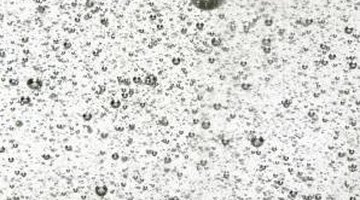How to Repair a Bubble in Fiberglass
Fiberglass is made of layers of fiberglass cloth bonded together with resin. When using fiberglass, it is important to make sure that no air bubbles are trapped between the layers. These bubbles are weak points and can compromise a project. If you have a finished fiberglass project with a bubble, it is important to repair it. This can be done by injecting Gelcoat, which is a thickened form of the resin.

-
Expose the bubble. Do this by cutting it open with a utility knife if it is next to the surface, or by carefully drilling into it if it is deeper in the fiberglass.
If a deep bubble is large, drill several small holes into it at various spots along the bubble. These holes will allow air to escape when injecting the Gelcoat.
-
Wash the opened bubble with acetone and allow it to dry.
-
Mix a small batch of Gelcoat with its catalyst in a paper cup. Mix the Gelcoat thoroughly, but do not whip bubbles into it.
-
Pull the plunger off a plastic syringe and fill the chamber with Gelcoat.
-
Replace the plunger into the syringe and press it with the syringe pointed up. You want to squeeze out all air until the Gelcoat reaches the tip.
-
Insert the tip of the syringe into the open bubble or drilled hole. Fill the bubble with Gelcoat until it is full. If you have drilled several holes, keep injecting until Gelcoat runs out of all of them.
-
Wipe any excess Gelcoat from the surface with an acetone-soaked rag.
-
Allow the Gelcoat to cure overnight.
-
Sand the fiberglass smooth as needed.
References
Warnings
- Wear rubber gloves when working with Gelcoat.
- Wear goggles and a dust mask when sanding Gelcoat.
Writer Bio
Alex Smith began writing in 2006 and brings a combination of education and humor to various websites. He holds a Master of Arts in theater and works as a professional makeup and special-effects artist.
Photo Credits
- Jupiterimages/Comstock/Getty Images
More Articles



